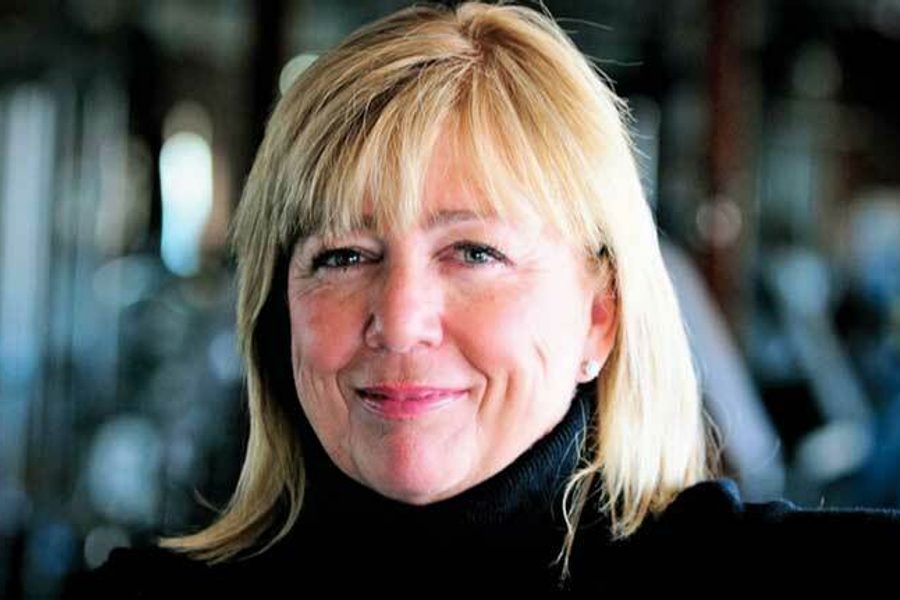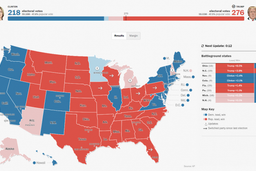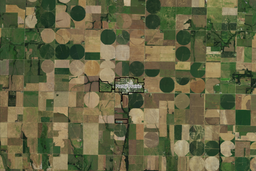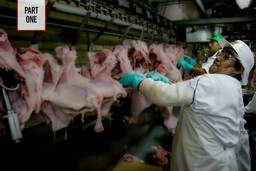Where Farmers Markets and CSAs Fall Short
Mary Berry, daughter of poet Wendell Berry, wants to take local food beyond ‘a faddish economy.’
John Collins

Everything we eat has a story behind it. The bread aisle (at the store with the massive parking lot) is a thrill ride. That story starts on stretches of land in places you’ve never been. Its main characters are gene-splicing scientists, patented life forms and huge industrial robots. Fleets of 18-wheelers make epic road trips before the narrative climaxes in the cash register of one mega-corporation or another. By comparison, the story of sustainably raised, locally marketed food is a bucolic tale: a hop from farm to table.
In 1975, Wendell Berry — the poet, novelist, farmer, activist and philosopher — released The Unsettling of America. That collection of essays focused on the cultural and environmental implications of modern agriculture and the need to put intelligence before profit when it comes to the business of farming. On October 4 on PBS, Moyers & Company will present Wendell Berry: Poet and Prophet, a documentary produced by the Schumann Media Center that features a conversation between veteran journalist Bill Moyers and rural America’s man of letters.
Thirty-eight years after the publication of The Unsettling of America, we remain disconnected from the production of the food that keeps us alive. What we put in our mouths we trust to the hands of an industry so massive it’s difficult to comprehend. Transforming the current system into one that values healthy land, production on a sensible scale and a reliable marketplace for small farmers requires a David-at-the-heels-of-Goliath kind of mindset.
Small farmers must select which stones to throw at Big Ag. And Mary Berry, Wendell’s daughter, is helping them take aim as executive director of the Berry Center in New Castle, Ky.
Why did you and your father create the Berry Center?
The Berry Center’s goal is to institutionalize agrarian thought and make a movement towards cultural change. We’ve been developing a four-year farm degree at St. Catherine College in Washington County, Kentucky. We’re also working on a farm school, in Henry County, to help new or existing farmers learn what they need to know to get out of the commodity economy and into a local food economy. We’re talking about everything farmers and landowners can produce on their land — from timber to tomatoes — and how to keep them secure, and out of a boom and bust economy.
We need to look at the economic system first. Farmers aren’t moving toward local food, but they will if they think there’s a reliable market. Right now, they’re in corn and soybeans because that’s where the money is. And in Kentucky there are a lot of beef cattle, and beef cattle, if they’re well raised, and are dependent on perennial grasses, that’s good. If they’re raised on CAFOs [concentrated animal feeding operations] — on feedlots — that’s not good.
The excitement for local food in Louisville, the closest big city, is not matched in the countryside where I live. It’s an uncertain market. Farmers are scared of it, and rightly so. Even farmers who are doing well at farmers markets are uncertain because they are unable to plan ahead. We need a food system that allows farmers to plan their economic year. That would mean farmers signing contracts. A good example: The largest school system in Kentucky is now contracting with some local farmers for produce and meat. The interest in the entrepreneurial aspect of small farms is wonderful and needs to continue, but we’re trying to take it a step further.
What would be a good food system?
There’s not one answer. They’ll be many and we’re still trying to figure it out. I listen to people working on agricultural ideas talk about “food systems,” but I don’t know what they’re referring to. We don’t have one. There is a system that’s highly dependent on poisons and petroleum. And maybe some places have the beginnings of a small food system. But we’re not there yet. For example, I’ve heard people refer to the “Louisville Foodshed.” What does that mean? How far out does that go? Louisville is surrounded by small farms. And I know it’s possible that Louisville can be fed by the landscape around it. We just need to figure out a way to make that work for the farmers.
Is there a cultural shift in agricultural awareness taking place?
Urban people’s interest in where their food comes from, and the quality of it — their worry about poisoned food, soil loss, toxicity, etc. — is a good thing. Community Supported Agriculture (CSAs), farmers markets, urban gardens, community gardens and school gardens are also all good. The worry, to me, is that all of this is entrepreneurial. Too many CSAs in any given area can make it hard for a farmer to sell enough CSA shares to get by. Our work is to try to get farmers out of a faddish economy.
The other day, I was talking to a friend of mine who had the first CSA in Kentucky. He was saying that the CSA is a great model for a young farmer. He paid off his farm with a CSA. (He had borrowed the money in the 1980s, at 13 percent interest.) But he said, “You know what? It’s a young person’s game.” And that’s true, simply because it’s really hard work. He’s 55 now, sustainably logging on his own land and doing fine, but do we want farmers to quit at 55? No. We need a place for farmers, an economy for them to function in. This is critical and crucial. If we stick only with the “local food” part of the movement, it’s not going to amount to much. We’ve got to simultaneously talk about cultural change and land use more generally. No matter how different things seem to be, we are still a land-based economy. People seem to not know that, but we are.
Are young people latching onto this cultural change?
Very rightly, a lot of young people see agriculture as the place to work in. If we can turn around agriculture, we can deal with a lot of our other problems. Young people interested in agriculture these days might finally be what Wallace Stegner called “stickers.” They appear to be in it for the long haul.
Why do you think that’s the case?
Part of it is because our economy just isn’t what it was before 2008. Many of the back-to-the-landers who were around Henry County in the 1970s had college degrees from good universities. When the going got rough on farms, they had a lot to fall back on. I don’t think that’s the case anymore. Young people understand that they’re not going to graduate from college and make whatever they thought — $100,000 a year, $50,000 — right off the bat. It’s just not out there. So they are looking for a different way. Maybe agriculture will be where more young people will end up.
Does this land-based education you advocate have a place in urban communities and universities?
Absolutely. This is not just for rural people. And thank God, because there are only 15 percent of us left in rural America. This is about all of us. We all need to understand what’s going on. If you’re far away from a mountaintop that’s been removed, but are still using electricity that’s cheap because of it, you still have responsibility. We have to be good citizens. And a way to be a good urban citizen is to be an informed shopper and eater. In this economy it’s almost impossible. We are all complicit in what’s wrong here. But if you, or if I, think about the place where we’re from — its health and its welfare — then that makes it easier to imagine having some effect on it.
Do you and your father ever disagree?
My father and I have never had a serious disagreement about anything, at least not since I was a teenager and wanted to stay out all night. I have always thought that farms and farm people, and the health of the place where we were living were important. But I’m trying to work on policy in a way that Daddy hasn’t. I needed to take a public role in this struggle. And that really didn’t happen until five years ago when I was appointed — by Obama actually, although I don’t think he knows it — to the Kentucky state board of the Farm Service Agency. It allowed me to see the two sides of agriculture at the same time: the grassroots, small farm world (which I was obviously much more familiar with) and the Farm Service Agency side, which is a massive USDA program. That’s when I realized the two sides were absolutely polarized.
Neither side understood what was going on. The grassroots people didn’t understand much about the history of agriculture and were very small in their interests. They were talking about farms much smaller than I considered a traditional Kentucky farm. On the USDA side, I thought I’d find people who understood the problems with Big Ag that my father and his friends had been talking about for a long time. It turned out they hadn’t even heard of them.
I get asked if I ever feel bad about preaching to the choir, and I say, “You know what? The choir doesn’t understand rural places very well or the lives of farmers very well.” Very often people in urban places think, “If we just got rid of subsidies then a whole lot of farmers would start raising organic cucumbers and broccoli.” Well, it’s not going to happen that way.
How does this movement press forward?
It’s incredible to me how threatened Big Ag feels. What’s the local food market— like 1 percent? But we have to be ready for how threatened they’re going to be. And we have to be very careful. One of the weaknesses of our movement is bastardized language. If you listen to ads from Wal-Mart and big chain grocery stores, they’ve got our language. They’re talking “local, local, local” and “sustainably raised,” and that’s just bullshit. If the big grocery store claims they’re selling local produce, find out what they’re talking about. And if you can’t, that means they’re lying. You have to educate yourself. You have to be vigilant. It really makes the world more interesting. It’s called living an informed, awake life, and it’s way more interesting than sleepwalking through it.









